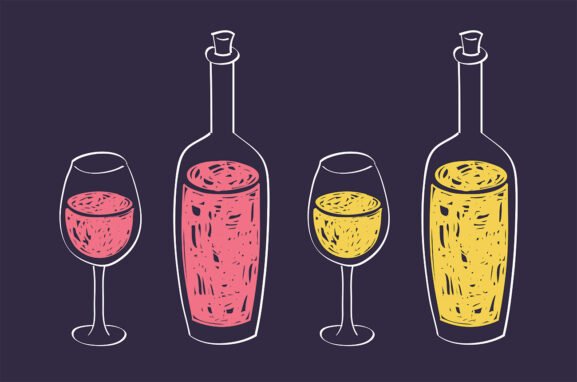What Is Cava? | Wine Enthusiast
In 1872, Shortly after returning home from a trip to Champagne, multigenerational grape grower and winemaker Josep Raventós made Spain’s first sparkling wines via the méthode traditionnelle in the town of Sant Sadurní d’Anoia, in Catalonia.
These wines, which were produced with the second fermentation in the bottle, became the basis for what has come to be known as Cava.
Just as Champagne can only be made in the Champagne A.O.P. (Appellation d’Origine Protégée) of France and Italy’s Franciacorta can only be produced within the confines of its Denominazione di Origine Controllata e Garantita (D.O.C.G.), Cava’s Denominación de Origen (D.O.) status means that it can be produced only in specific regions of Spain under strict requirements set out by the governing body.
The category has long been known for its budget-friendliness; however, recent changes within the D.O. have shifted the focus to Cava’s high-quality offerings, which are still incredibly affordable in comparison to some other regions. A semi-recent backlash amongst some small producers contributed to this.
“Cava is known to produce excellent value with more character,” says Nicolas Quiñones, market manager for Spanish and Portuguese importer Ole & Obrigado. “Folks in the know know you’re going to get more aged wine in Cava with more maturity and complexity, richness and texture.”
Why is this the case? And what are those requirements and conditions that differentiate Cava from other well-known traditional method regions across the globe? Below, we’ve rounded up all the details on everything you need to know about the Spanish sparkler.
What Is Cava?
Let’s start from the top.
Cava is a traditional-method sparkler made in a wide array of sweetness levels from a unique list of approved grape varieties. The list includes native Macabeo, Xarel-lo and Parellada, which together account for more than 80% of the category’s plantings. Other approved grapes include Chardonnay, Garnacha Tinta, Trepat, Pinot Noir, Subirat Parent and Monastrell.
It is produced in four geographically diverse zones that spread across the country. This includes Comtats de Barcelona in Penedès (where 95% of Cava is produced); Valle del Ebro running between Zaragoza in the Aragon region; Vitoria-Gasteiz, in Basque Country; Viñedos de Almendralejo, in the Tierra de Barros region; and Requena near Valencia.
In 2020, two of these five growing areas were further divided into seven different subzones to highlight the unique microclimates and terroirs.
Five of these new areas—Valls d’Anoia Foix, Serra de Mar, Conca del Gaià, Serra de Prades and Pla de Ponent—are located in the Comtats de Barcelona zone in Cava’s ancestral home of Penedès. There’s also Alto Ebro and Valle del Cierzo in Valle del Ebro.
This new focus on highlighting the diversity of these growing regions may soon change perceptions of what the historically budget-friendly bubbly can and should be.
“Up until these new regulations came into play, Cava was essentially blended from the regions,” says Master of Wine and Cava Educator Mary Gorman. “What ended up in the bottle wasn’t an expression of any one particular zone. Now, with these new zones we begin to see, over time, an emergence of what they are.”
A good example of this, says Gorman, are the Cavas made by Alta Alella, whose vineyards overlook the Mediterranean, a mere 11 miles from downtown Barcelona, in the Serra de Mar subzone. “I’ve found that these are much brinier and there’s a little more tension in the wine,” she says.

What’s the Difference Between Cava and Champagne?
Aside from the fact Cava is made in Spain and Champagne can only be produced in its eponymous region in France, there are some distinct differences between the two traditional-method sparklers.
The flavor profile and mouthfeel are the most significant contrasts. Champagne’s cooler climate, higher acid grapes and signature chalky, limestone soils give it a “much more bracing spine of acidity,” says Gorman. Where Champagne is often described as linear due to this acidity, Cava is known to be rounder in texture.
The aging requirements for various Cava and Champagne categories differ, as well. The longer these wines mature on the lees (spent yeast cells), these flavor variations become more pronounced.
For Champagne, Gorman says, “Autolytic development is much more brioche, pastry and toast: you don’t have the smokiness you have with Cava.”
As you get into longer-aged Cavas, that slightly smokiness blends with toasty and nutty notes with an even rounder mouthfeel that pairs remarkably well with a wide range of dishes, says Gorman, “These wines go really well with food.”
They maintain “a lovely freshness and don’t have the bracing acidity of Champagne,” says Gorman—a plus for those who may find some sparkling wine too acidic for their tastes.
Plus, it’s a fraction of the price. Basic Cavas can often be found for around the $10 mark—impossible for Champagne—and you can score the longer-aged versions for under $40. “In order to get that level of evolution in a Champagne, you’d be paying an awful lot more money.”
This brings us to the next point to consider: Cava’s aging categories.
What are the Different Cava Categories?
Starting in 2021, the Cava D.O. implemented new categories to better define and highlight the increasing quality of these wines. There are four categories, starting with basic Cava de Guarda and moving into three sub-categories of Cava de Guarda Superior.
Cava de Guarda is aged on the lees for a minimum of nine months. This light and fruity style is “fragrant, crisp and can have a touch of toast,” says Quiñones. “Aromas and flavors are fruitier” with a leaner mouthfeel than their longer-aged cousins.
The three categories of Cava de Guarda Superior—which will require all grapes used to be organic by 2025 and a vintage label on the bottle—are as follows:
Cava Reserva requires a minimum of 18 months of aging. These bottles have more depth and complexity than their predecessors. Expect a “more textured mouthfeel,” says Quiñones. “The flavor shows more richness and development.”
Cava Gran Reserva is the next step up, these even richer, more developed wines spend a minimum of 30 months on the lees. These are “less fruity and very much gastronomic,” says Gorman. “Depending on how long it’s aged, they can still be quite tight or get nice tertiary notes of dried fruits with a bit more earthiness. Like all of these wines, there’s a nice salinity that gets you on the finish.”
Cava de Paraje Calificado is the most terroir-focused wines of Cava. Bottles bearing this label must be made from grapes sourced within a small, distinguished area that has been accredited by the D.O. for its specific characteristics. Grapes must be harvested manually with a maximum production yield of 8,000 kilograms per hectare, all of which must be pressed, bottled and aged for a minimum of 36 months on the estate.
Like all of the aforementioned categories, many of the Cava de Paraje Calificado producers choose to age their wines far longer than the D.O. requirements, allowing for even more complexity in the bottle—though these wines are just barely starting to come online in the States.
“The older ones I’ve tasted—some 10 to 15 years on lees—have had so much energy and lovely tertiary evolution,” says Gorman. “I think that’s something special for a wine drinker to experience wines that have been on their lees for that length of time.”
Again, part of this push to elevate Cava came about after a group of producers pulled out of the D.O., in 2019, and started labeling their wines under the name Corpinnat (roughly translating to “heart of Penedès” in Latin).

What Is the Difference Between Cava and Corpinnat?
Corpinnat is a collective of 11 sparkling wine producers who make wine in the calcareous clay soils of Penedès. Somewhat reminiscent of Champagne, chalky soil “is really well suited for sparkling wine production,” says Quiñones.
It’s not just the geographic limitations that are stricter for the category, the farming and aging requirements are firmer, too.
Grapes must be organic, picked by hand and made at a member organization’s winery. If a Corpinnat winery buys grapes, they are obligated to pay a higher, premium price to growers.
All Corpinnat wines must spend at least 18 months on the lees (meaning entry-level Corpinnat would qualify as Cava Reserva). These wineries must also make at least one wine aged for a minimum of 30 months and another aged 60 months or more on the lees.
Because of these stringent requirements, many wine pros have come to believe that to be considered good, Spanish sparkling wine must be labeled as “Corpinnat.” Though those wines are certainly of a high standard and definitely worth exploring, this assumption is wrong for a number of reasons.
Arguably the most esteemed sparkling wine brand in Spain, Raventós i Blanc, founded by the man who brought the traditional method to the country, bottles its wine under their own designation, Conca del Riu Anoia. There are also great wineries producing high-quality bubbles under the Clàssic Penedès denomination.
And many of Cava’s smaller producers have been working overtime to showcase the high caliber of their wines. “It’s really sad that so many people think Cava is cheap and in order to be good it has to be Corpinnat,” says Gorman. “So much great work is being done with Cava.”

Casteller NV Brut Sparkling (Cava)
Offering a persistent column of bubbles and a bouquet of lemon, honeydew melon and rising pizza dough, this wine opens on the palate with bright citrus-fruit flavors. Notes of brioche, vanilla and slivered almond settle in among a pleasing sense of effervescence that goes the distance. 92 Points — M.D.
$ Varies
Fine Wine Cellars
More Sparkling Wine Coverage

From the Shop
Find Your Wine a Home
Our selection of white wine glasses is the best way to enjoy the wine’s subtle aromas and bright flavors.
Last Updated: September 5, 2024

